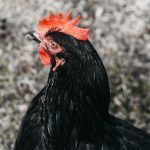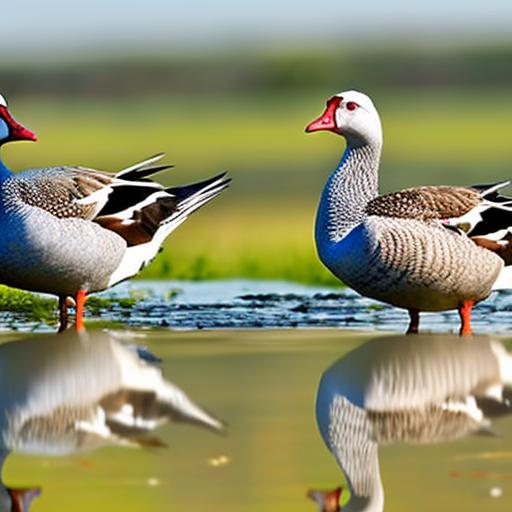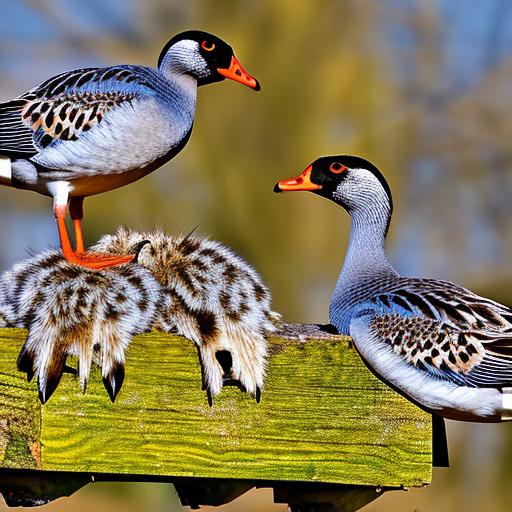Quail and chickens are both popular choices for backyard poultry, but they have some key differences that are important to understand before deciding which to raise. Quail are smaller birds, typically weighing between 4-6 ounces, while chickens can weigh anywhere from 4-8 pounds. Quail are also known for their ability to fly short distances, while chickens are flightless birds. In terms of egg production, quail are known for their small, speckled eggs, while chickens produce larger, solid-colored eggs. Additionally, quail are known for their delicate and mild flavor, while chicken meat is more robust and versatile. Understanding these differences can help you make an informed decision about which bird is right for your needs.
Quail and chickens also have different social behaviors and living requirements. Quail are known for their skittish and flighty nature, while chickens are more social and can be quite friendly with humans. Quail prefer to live in small groups and can be territorial, while chickens thrive in larger flocks and have a more structured social hierarchy. Additionally, quail require less space than chickens and are more adaptable to different living environments. Understanding these behavioral differences can help you create the ideal living environment for your birds.
Table of Contents
- 1 Creating the Ideal Living Environment for Quail and Chickens
- 2 Feeding and Nutrition for Quail and Chickens
- 3 Health and Disease Management for Quail and Chickens
- 4 Breeding and Reproduction of Quail and Chickens
- 5 Integrating Quail and Chickens in the Same Space
- 6 Harvesting Eggs and Meat from Quail and Chickens
Creating the Ideal Living Environment for Quail and Chickens
When it comes to creating the ideal living environment for quail and chickens, there are some key differences to consider. Quail prefer a more naturalistic environment with plenty of ground cover and hiding spots, as they are known for their skittish nature. They also require less space than chickens, with about 1 square foot per bird being sufficient. Chickens, on the other hand, require more space and benefit from a larger coop with roosting bars and nesting boxes. They also need access to a run or outdoor space for scratching and foraging.
Both quail and chickens require protection from predators, so it’s important to invest in secure housing with strong wire mesh and locks. Additionally, both birds benefit from access to fresh air and natural light, so ventilation and windows are important considerations. Providing a clean and comfortable living environment is essential for the health and well-being of both quail and chickens.
Feeding and Nutrition for Quail and Chickens
Feeding and nutrition are important considerations when raising quail and chickens. Quail are omnivores and require a diet high in protein, typically around 24-28%. They also benefit from a diet that includes seeds, grains, and insects. Chickens are also omnivores but have a lower protein requirement, typically around 16-20%. They can be fed a diet of commercial poultry feed supplemented with kitchen scraps and occasional treats.
Both quail and chickens require access to clean water at all times, as well as grit to aid in digestion. It’s important to provide a balanced diet that meets their nutritional needs to ensure optimal health and egg production. Additionally, providing access to foraging opportunities can help both quail and chickens exhibit natural behaviors and improve their overall well-being.
Health and Disease Management for Quail and Chickens
Maintaining the health of your quail and chickens is essential for their well-being and productivity. Both birds are susceptible to a range of diseases and parasites, so it’s important to implement a regular health management routine. This includes regular cleaning of their living environment, monitoring for signs of illness, and providing access to veterinary care when needed.
Quail are particularly susceptible to stress-related illnesses, so it’s important to provide a calm and quiet living environment. They are also prone to respiratory diseases, so good ventilation is essential. Chickens are more susceptible to external parasites such as mites and lice, so regular inspections and treatment are important. Both quail and chickens benefit from a regular deworming program to prevent internal parasites.
Breeding and Reproduction of Quail and Chickens
Breeding and reproduction are important considerations when raising quail and chickens. Quail reach sexual maturity at around 6-8 weeks of age, while chickens typically reach maturity at 5-6 months. Both birds require a male to female ratio for successful breeding, with one male being able to fertilize multiple females.
Quail are known for their prolific egg production, with females laying an egg every day or two during the breeding season. They typically lay eggs in hidden nests on the ground, so it’s important to provide suitable nesting areas. Chickens also require nesting boxes for egg laying, with each hen typically laying 4-6 eggs per week.
Integrating Quail and Chickens in the Same Space
Integrating quail and chickens in the same space can be challenging due to their different social behaviors and living requirements. Quail are known for their skittish nature and can be easily stressed by the presence of larger birds like chickens. It’s important to provide separate living areas with secure fencing to prevent aggression or injury.
If you do choose to integrate quail and chickens in the same space, it’s important to monitor their behavior closely and provide plenty of hiding spots for the quail. Additionally, providing multiple feeding and watering stations can help prevent competition between the two species. It’s also important to consider the potential for disease transmission between quail and chickens, so regular health monitoring is essential.
Harvesting Eggs and Meat from Quail and Chickens
Harvesting eggs and meat from quail and chickens is a rewarding aspect of raising poultry. Quail eggs are small but packed with flavor, making them a popular choice for gourmet dishes. Quail meat is also prized for its delicate flavor and tender texture. Chickens produce larger eggs that are versatile for cooking, as well as meat that is commonly used in a wide range of dishes.
When harvesting eggs from quail and chickens, it’s important to collect them regularly to prevent breakage or spoilage. Both quail eggs and chicken eggs can be stored in the refrigerator for several weeks before consumption. When harvesting meat from quail and chickens, it’s important to use humane slaughter methods and ensure proper food safety practices during processing.
In conclusion, raising quail and chickens can be a rewarding experience that provides fresh eggs and meat for your family. Understanding the differences between these two species is essential for creating the ideal living environment, providing proper nutrition, managing health and disease, breeding successfully, integrating them in the same space, and harvesting their products. With careful planning and attention to their specific needs, you can enjoy the benefits of raising both quail and chickens in your backyard poultry flock.
Meet Walter, the feathered-friend fanatic of Florida! Nestled in the sunshine state, Walter struts through life with his feathered companions, clucking his way to happiness. With a coop that’s fancier than a five-star hotel, he’s the Don Juan of the chicken world. When he’s not teaching his hens to do the cha-cha, you’ll find him in a heated debate with his prized rooster, Sir Clucks-a-Lot. Walter’s poultry passion is no yolk; he’s the sunny-side-up guy you never knew you needed in your flock of friends!







